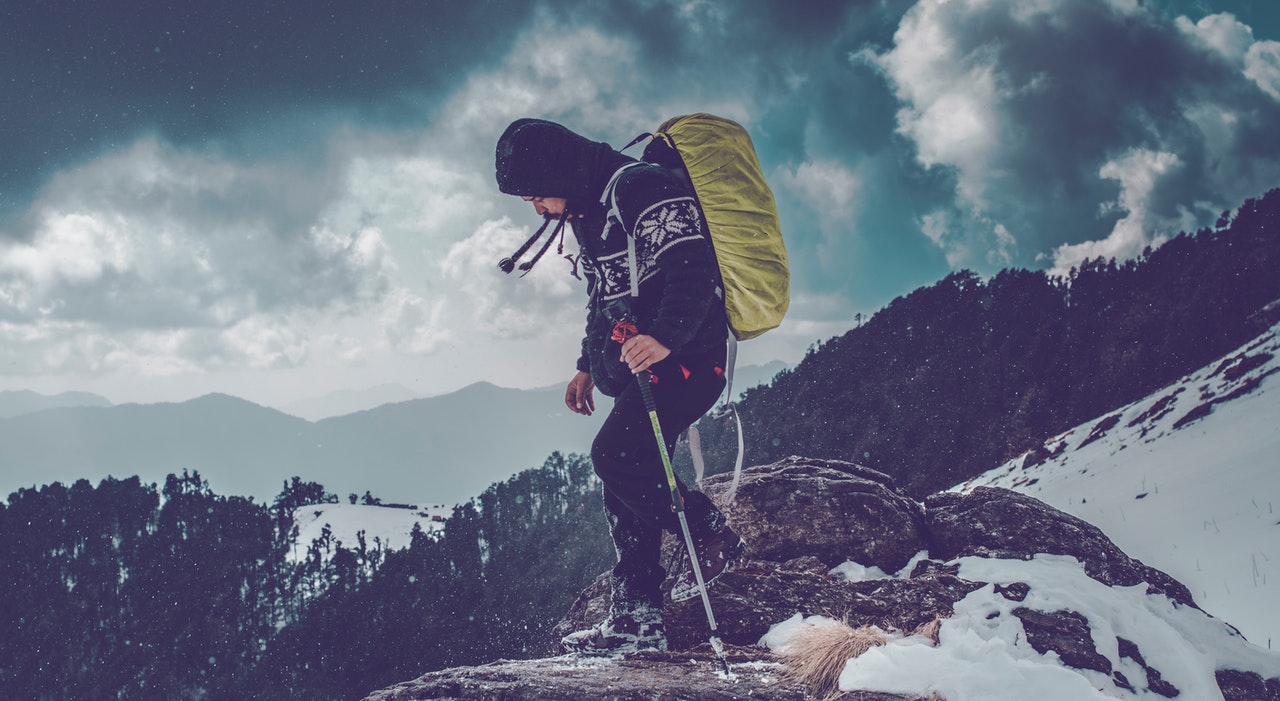Mera Peak is a quite popular climbing peak in the Hinku Valley of Mahalangur section. It’s an ideal trekking peak for all avid mountaineers but mostly beginners who are fit and fearless. With just an elevation of 21,197 ft, this peak isn’t as vicious as mountains at greater heights, which causes mountaineers to mistake it for easy walks.
But, Mera Peak climbing isn’t a piece of cake, with long and unpaved terrains. Ascending this mountain requires great skills and strength. Climbers must be able to overcome their fear and scale steep ridges and rocky glaciers. Here are other top 5 risks of Mera Peak Climbing.
1. Steep Terrains
The trails of Mera Peak are one of the greatest hurdles for mountaineers. They are tough and physically demanding with long and steep climbs. The vast majority of its trails are unpaved, coming past rugged hills and wild forests.
Of those that have been trekked, only the ones at lower elevation are relieving. Any trek above base camp is extremely difficult due to the trails rising steeply. Climbers have to go through the mountain ridges and ascend glaciers to reach the summit. They may even have to use crampons and ice axe to climb the ice slopes, which is quite daunting.
2. Altitude Sickness
Altitude Sickness is common among beginners who have never traveled to higher altitudes. But, on the whole, it can have an adverse effect on anyone, even the ones who have climbed mountains before. It usually occurs when the climbers have reached an extreme height, which reduces their ability to go any further.
Any trek above 3,000 meters is likely to increase the chances of trekkers suffering from altitude sickness. The gradually decreasing atmospheric pressure and low oxygen will affect their ability to breathe and causes anxiety. They may even experience health problems like dizziness, headache, insomnia, and fatigue.
It’s possible for the sickness to get worse as they go higher. Staying at the summit of Mera Peak for a long time may also affect their health. Therefore, trekkers have to be careful while climbing Mera Peak.
They should spend enough time acclimatising to adapt to the weather and climate at the new altitude. If the symptoms are getting worse, they must descend the trail or get the medical help needed.
3. Unpredictable weather
The changing weather of Mera Peak has always caused trouble for mountaineers. In fact, it’s seen as a key factor for the objective threat of the adventure. Even a small change in temperature can affect your expedition to the summit.
In a mountain as high as Mera Peak, the weather is unpredictable due to the high altitude above sea level. Trekkers will often face the worst kind of weather, even during the mountain climbing season. This sudden fluctuation in the weather and temperature may leave them dumbfounded.
Not just that, the frosty winter of Mera Peak combined with snowstorms and blizzards prevent climbers from reaching the summit. The decreasing temperature of up to -20 Degree Celsius, along with other adverse weather conditions, makes the climb harder
4. Poor Planning and Preparation
Although Mera Peak is considered to have alpine climbing trails, the mountain is indeed not the easiest one to climb. Most of its trails are rugged, with rocks and boulders, which require a lot of preparation to ascend.
Beginners who are to climb the mountain for the first time are likely to be underprepared for the hike. They may even have trouble choosing the right supplies and equipment for the trek. That’s not all, as mountaineers also require proper clothing that protects them from cold and wind.
5. Training
Any trekker who’s new to mountaineering will experience difficulty dealing with the trails of Mera Peak. The extended period of trekking on the mountainous terrains will make them suffer more and more. But trekkers who have done altitude treks like Everest Base camp trek, they will find Mera peak as a less difficult climb.
Hence, it’s essential for trekkers to learn a few techniques that’ll make the journey easier and less stressful. To reach the summit, they’ll need special skills and training that’ll help improve their physical stamina and endurance.
Mountaineers have to increase their fitness level through personalised training and exercise like aerobic and cardiovascular. If the mountaineers are physically weak, then they’ll never be able to make it to the top.



